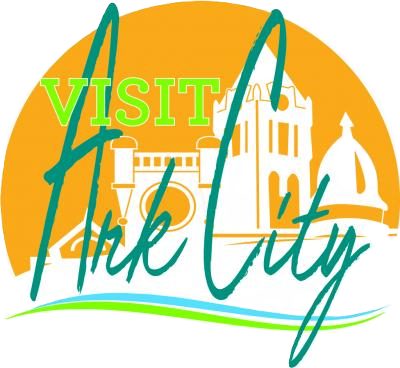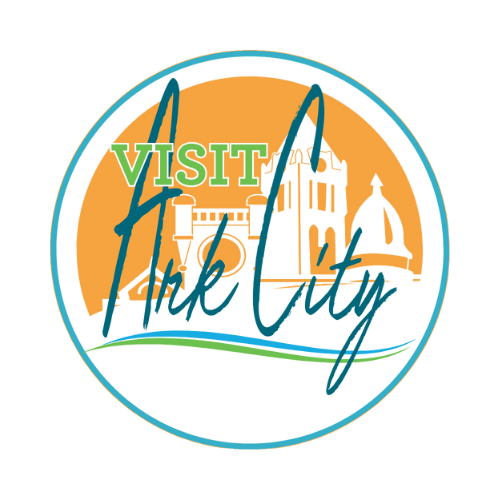Ark City Downtown Historic District
Get ready to experience history

Downtown Historic District
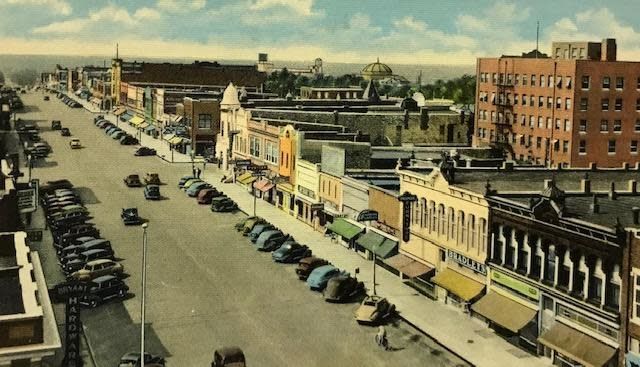
Est. 1870
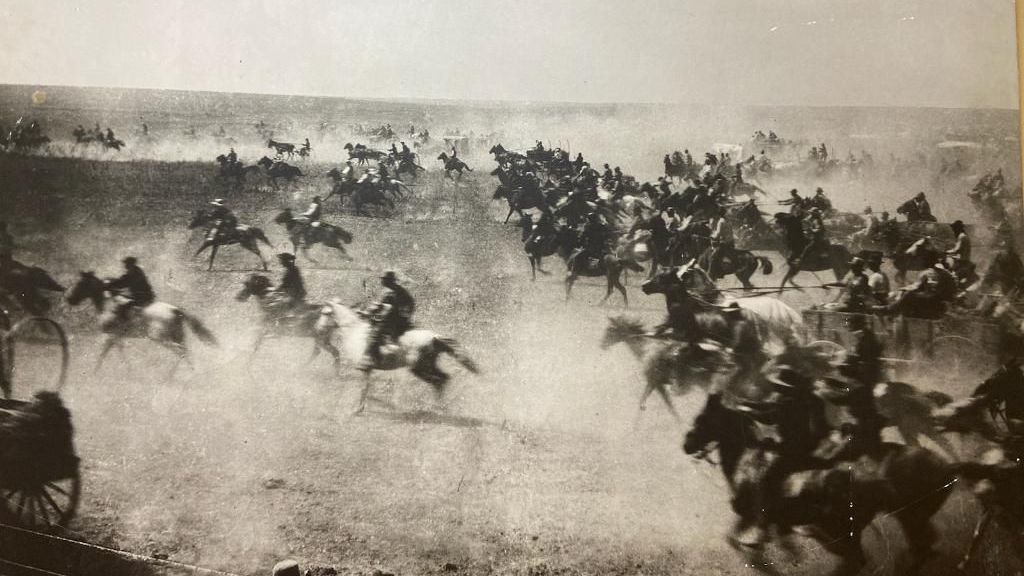
The City of Arkansas City was founded in 1870 and incorporated as a city in Cowley County the following year.
The population of the City was 214 in 1870, when Osage tribal land was opened for settlement that July. By 1880, it had swollen to 1,799, according to Cutler’s History of Kansas.
The first building in the settlement was a log house. A general store from Emporia and a newspaper, first published in August 1870, quickly followed.
C.M. Scott, publisher of The Arkansas City Traveler, noted there were 12 houses and 38 business buildings in the new town site.
With the news of the pending arrival of the Atchison, Topeka & Santa Fe rail line, the town constructed a water sawmill and flour mill.
1880's Growth
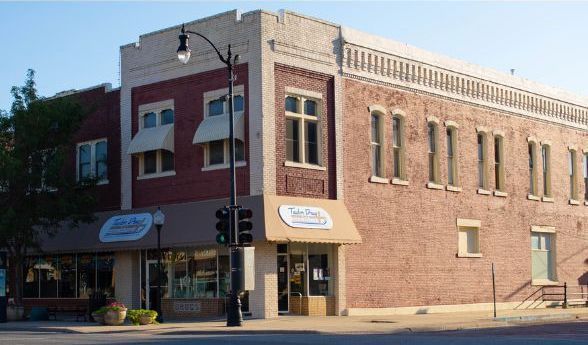
By 1881, the town had its own waterworks, with spring water pumped to a reservoir in the southern portion of the city.
Arkansas City improved its downtown commercial district rapidly during the 1880s, constructing several handsome brick-and-stone buildings on South Summit Street between Adams and Fifth Avenues.
Business growth also occurred along Central Avenue.
Between 1910 and 1930, the town continued to boom with the discovery of oil in Cowley County. The first refinery was constructed in 1917, followed by a second in 1923.
The town's economy took off as the flour mills and meatpacking industry grew.
Roaring 20's
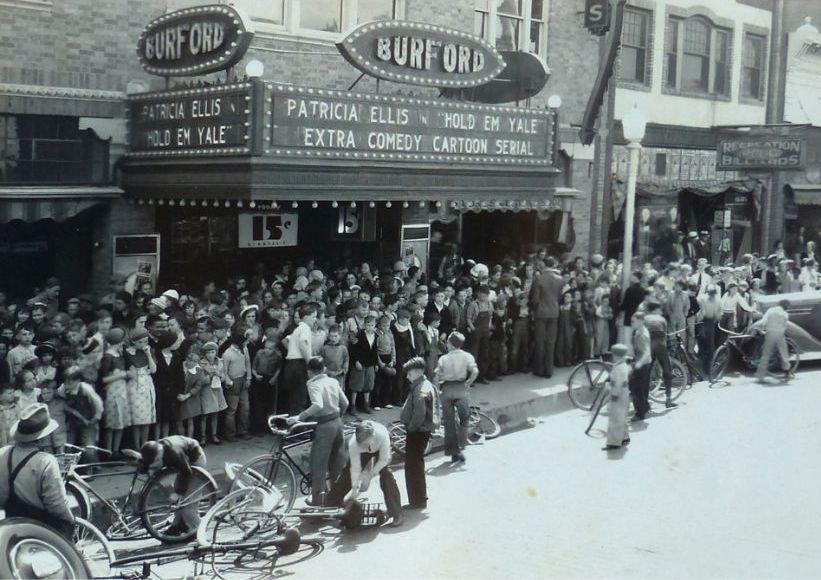
The oil boom, which reached its peak in 1925, tapered off in the late 1920s and 1930s, but the population remained relatively stable (around 12,000 to 14,000) through World War II, supported by trade and other industries.
Just prior to World War II, the cities of Arkansas City and Winfield arranged for the joint purchase of land for construction of an airport, now known as Strother Field.
During the war, the U.S. Army Air Corps leased the land and developed the field as a training base.
The military returned Strother Field to the cities a short time later.
1960's to Now
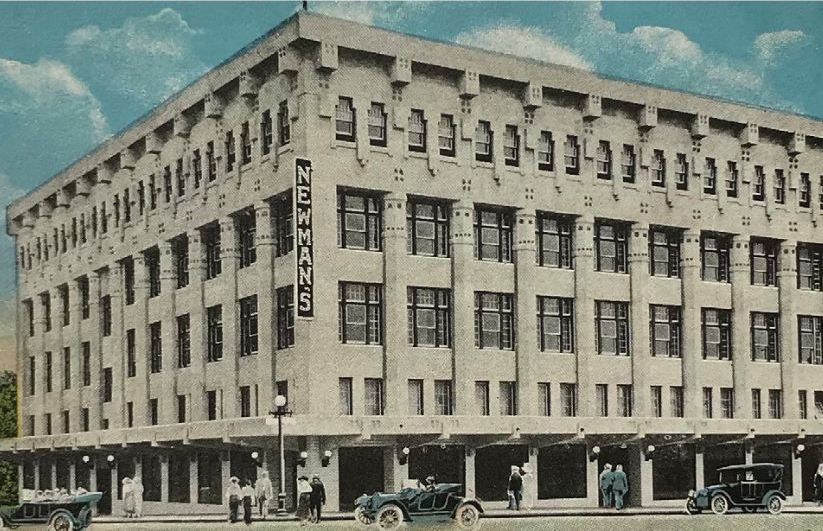
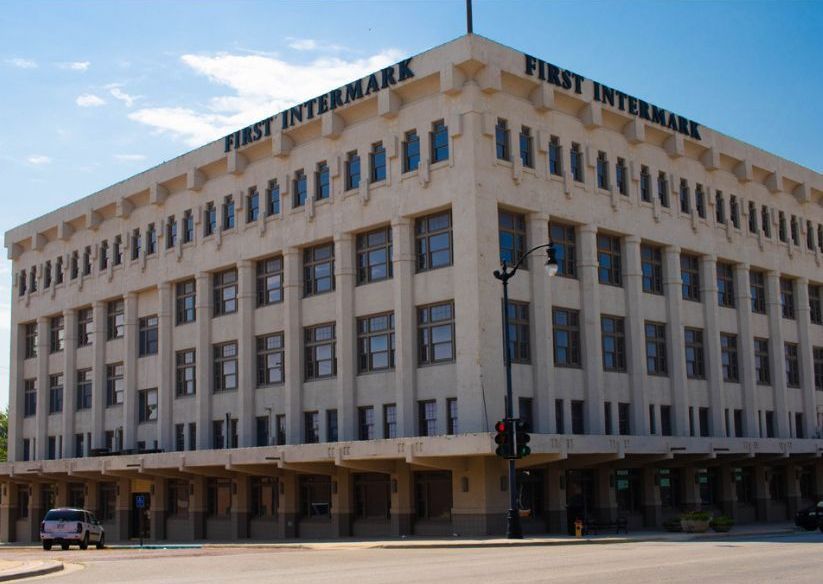
Between 1960 and 1990, Arkansas City experienced a gradual loss of population, from a high of 14,262 in 1960 to 13,201 in 1980.
The downtown remained the primary location for finance and specialty retail shops for years, keying a regional retail hub, but a primary concern of community leaders at the time was the renovation of older downtown buildings, which continues to be a local challenge to this day.
The 1990s and early 2000s presented serious economic losses to the community when Morrell Meats and the Total Petroleum refinery closed.
New businesses have moved in, and others have expanded, including Creekstone Farms Premium Beef, which now employs more than 1,000 people.
Historic Building Tour
You can learn more about many of the buildings by clicking on the building name below.
To participate in a walking tour you have several options. The printed brochures will be available at the Visit Ark City offices at 106 S Summit Street, or a downloadable version is linked below.
Finally, you can access a specially designed web application that will walk you through the walking tour on your mobile device. Links will be provided for you to learn more information about each building.
Historic Building Details
American National Bank
Built in 1922, the American national Bank is a three-story brick and terra cotta building with classical detailing. It served as a financial hub in the early 20th century and remains a cornerstone of Arkansas City's historic downtown.KHRI ListingArkansas City Office Building
The Arkansas City Office Building, constructed in 1928, features Italian Renaissance Revival architectural styling. Originally home to professional and medical offices, it played a key role in the city’s economic development.KHRI ListingBryant Hardware/Feagin-Thomas Drug
This commercial block building has housed a variety of businesses since the late 1800s. Known for its ornate cornice and brickwork, the structure reflects the city’s early commercial prosperity.KHRI ListingBurford Theatre
In 1919, J.B. Burford and associates purchased Highland Hall and the Isabella Block to build the Burford Theatre. After razing the buildings in 1924, the Burford opened with a $300,000 investment. It hosted vaudeville acts, movies, and notable performances including Ginger Rogers and Janis Carter. It closed in 2004, and was restored through a 12-year, $7.5 million effort led by the Arkansas City Area Arts Council. Reopened in 2016, it stands today as a restored venue and landmark.KHRI ListingCarnegie Library
Funded by philanthropist Andrew Carnegie, the library opened in 1912 and served as the main public library for over 70 years. This Classical Revival building features a columned portico, symmetrical design, and has been an important civic landmark.KHRI ListingCity Hall and Fire Station
The City Hall and Fire Station building served as the center of municipal operations in Arkansas City and is a classic representation of early 20th-century civic architecture.KHRI ListingCentral Christian Church
This historic church structure, with Gothic Revival influences, has been a religious and community gathering place for generations in Arkansas City.KHRI ListingCornish Photography Studio
The Cornish Studio is an excellent example of a turn-of-the-century commercial building. It has housed professional photographers for decades and retains much of its original façade.KHRI ListingCrescent/Beard Building
Originally housing a drugstore and offices, this Romanesque Revival building has been a downtown mainstay since the early 1900s.KHRI ListingCreswell Building
One of Arkansas City's earliest commercial structures, the Creswell Building represents the early boom-town period with its brick and stone detailing.KHRI ListingEagle/Summit Block
This block of buildings was home to retail shops and upstairs offices. It showcases the characteristic architectural details of early 20th-century commercial design.KHRI ListingFifth Avenue United Presbyterian Church
The Fifth Avenue United Presbyterian Church was built in the early 20th century and features Gothic Revival architecture with its tall spire and pointed arch windows.KHRI ListingFirst Church of Christ Scientists
This small yet elegant Christian Science church was built in the early 1900s and served as a place of worship for decades. It reflects a simplified Classical Revival style.KHRI ListingFirst National Bank/Conrad Block
Combining Classical and Renaissance Revival styles, this bank and commercial block was a centerpiece of financial and social activity in the city's formative years.KHRI ListingFirst Presbyterian Church
Constructed in the early 1900s, First Presbyterian Church has long served as a spiritual and architectural anchor of the community, with its imposing stone construction and stained glass windows.KHRI ListingK.P. Castle Block
This multi-use commercial block was built in the early 1900s and includes ornate details and a variety of businesses that contributed to the downtown economy.KHRI ListingHome National Bank
Home National Bank was established in this grand early 20th-century building, known for its intricate stonework and enduring presence on Summit Street.KHRI ListingHoward Building
Built in the 1920s, the Howard Building has hosted a range of commercial tenants and contributes to the cohesive architectural character of the city center.KHRI ListingI.O.O.F. Hall
The Independent Order of Odd Fellows Hall was a fraternal lodge and meeting space. Its decorative façade and historic function make it a key landmark.KHRI ListingKirkpatrick's Furniture
Kirkpatrick’s Furniture building reflects the commercial vibrancy of Arkansas City during the 1920s. It has maintained much of its historic charm and storefront appearance.KHRI ListingMatlack Building and Addition
Originally built as a furniture store and funeral home, the Matlack Building has served diverse roles in the community since the early 1900s.KHRI ListingNewman's Department Store
Newman’s was a bustling department store anchoring downtown commerce. Its architecture combines elements of Art Deco and traditional storefront design.KHRI ListingOklahoma Tire & Auto
This simple commercial building housed a long-time tire and auto service business and is representative of mid-century commercial growth in Arkansas City.KHRI ListingOld High School
Built in 1910, the original Arkansas City High School building reflects early investment in public education and features Neoclassical details and a grand entrance.KHRI ListingOld U.S. Post Office
The Old U.S. Post Office, constructed in the 1920s, showcases federal-style architecture and was a central hub of civic communication for decades.KHRI ListingOsage Hotel
The Osage Hotel was one of the city’s premier lodging establishments, serving travelers and dignitaries alike. Its historic design has earned it a place on the local heritage list.KHRI ListingOrmiston Building
Once home to medical offices and law practices, the Ormiston Building has long been part of the city’s professional district. Its brickwork and arched windows are hallmarks of the period.KHRI ListingParker Block
The Parker Block was developed for commercial tenants and maintains its original storefront configuration, reflective of the city’s 1920s boom.KHRI ListingPilgrim Congregational Church
Pilgrim Congregational Church features Gothic Revival details and has been a faith community hub since its construction in the early 20th century.KHRI ListingRed Head Motor Co.
This auto showroom and service center was a centerpiece of Arkansas City’s motor age. It retains large display windows and signage elements typical of the 1930s.KHRI ListingRoyal Café
The Royal Café served locals for decades and is remembered for its friendly atmosphere and prominent corner location.KHRI ListingSacred Heart Catholic Church
This stately stone church with Romanesque features has served the Catholic community since the early 1900s and includes a rectory and school building.KHRI ListingS.H. Kress & Company
The Kress building was part of a national chain of department stores. Its distinctive architecture and signage remain iconic in downtown Arkansas City.KHRI ListingSheridan Block
The Sheridan Block was developed in the 1920s and housed a variety of retail businesses. Its brick façade and storefront windows are largely intact.KHRI ListingSummit Barber Shop
Summit Barber Shop is a small commercial space known for its continued operation and charming vintage interior.KHRI ListingRedeemer Lutheran Church
Redeemer Lutheran Church reflects mid-century ecclesiastical architecture and has served as a place of worship and community for decades.KHRI ListingTrinity Episcopal Church
Built in the Gothic Revival style, Trinity Episcopal Church features stained glass windows and a steep-pitched roof. It has served the community for over a century.KHRI ListingZadie Block Building
This two-story commercial building housed retail shops and professional offices. Its historic significance lies in its role in downtown development during the early 1900s.KHRI Listing
